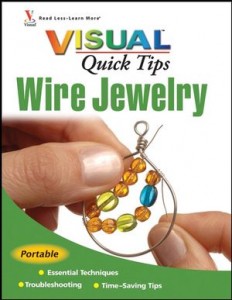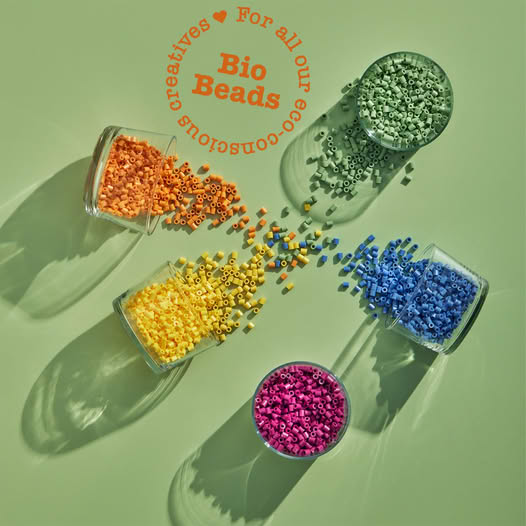
Wire Jewelry VISUAL Quick Tips by Chris Franchetti Michaels
- Spiral-bound: 224 pages
- Publisher: Visual; Spi edition (January 9, 2009)
- Language: English
- ISBN-10: 0470343842
- ISBN-13: 978-0470343845
Just like Visual Quick Tips Beading book I reviewed last month, author Chris Franchetti Michaels Visual Quick Tips Wire Jewelry book is a winner!!!!
Along with tons of tips, tricks and how to’s, it also has the coil wire binding so it can lay flat while you have 2 hands full of wire and pliers. I really think ALL jewelry instruction books should be bound this way!
As with the Beading Visual Quick tips, this book has lots of detailed color photos and concise instructions so you never have to second guess how to bend a piece of wire or guess what size gauge you have in your hand. This book is a MUST for anyone who wants to start making wire jewelry or as a handy reference guide for more advanced wirewrappers.
Chapter 1 is all about jewelry making wire-types of wire, wire shape, gauge, temper finishes and care.
Chapter 2 goes over wirework tools. From pliers to wire cutters, hammers, block, mandrels, files and more. There are pictures of each, so you can tell the difference between a rubber mallet and a chasing hammer.
Chapter 3 is all about safety, storage and organization-all important!
Chapter 4 is when you start working with the wire-Basic wirework includes making jump rings, eyepins, basic wire clasp and more.
Chapter 5 is more advanced techniques. You’ll learn how to make a wrapped briolette, wave finger ring, herringbone wrap and more.
Chapter 6 is wire chain. Make S hook chain, double spiral chain, byzantine chain and other fun chains.
Chapter 7 is using a wire jig. From basic techniques to wire jig patterns.
There is an appendix with the American Wire Gauge chart, coils per inch reference char, millimeter and inch conversions, oxidation methods, polishing techniques and resourses. I love this book and you will too.

Thanks for the reviews, Barbe – I’m glad you like the books! 🙂